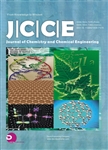Analysis of Differences in Inductance of Ni-Cu-Zn Ferrite Chip Inductors during the Plating Process
Analysis of Differences in Inductance of Ni-Cu-Zn Ferrite Chip Inductors during the Plating Process作者机构:Department of Jewelry Technology Dahan Institute of Technology Hualien County 97145 Taiwan (R. O. C.) Department of Electrical Engineering Cheng Kung University Tainan City 701 Taiwan (R. O. C.) Cyntec Co. LTD. Hsinchu County 30076 Taiwan (R.O.C.)
出 版 物:《Journal of Chemistry and Chemical Engineering》 (化学与化工(英文版))
年 卷 期:2014年第8卷第12期
页 面:1125-1134页
学科分类:081702[工学-化学工艺] 080801[工学-电机与电器] 0808[工学-电气工程] 08[工学] 0817[工学-化学工程与技术]
主 题:Plating ferrite stress inductors
摘 要:Although plating is a necessary process for SMT components, it alters the magnetic characteristics and inductance level of Ni-Cu-Zn ferrite components. The results of this work show that the following three factors in plating affect these components, and the effects are different for Ni- and Sn-plating: (1) Plating layers exert stresses and react with the residual stress of components to change the inductance level, and the effect of the tin layer is greater than that of the nickel one; (2) The plating current induces a magnetic field inside the components directly and indirectly, and this remains as remanence inside the components and reduces the inductance level, and the effect level of Ni-plating is greater than that of Sn-plating; (3) The plating solution corrodes the interface of the termination and ferrite core of the components to release the residual stress, and causes an increase in inductance, and the effect of Sn-plating is greater than that of Ni-plating. In addition, the inductance level is the result of the net effect of these three factors, and if the sintering temperature is increased to change in the type of residual stress, the net effect will be changed.



